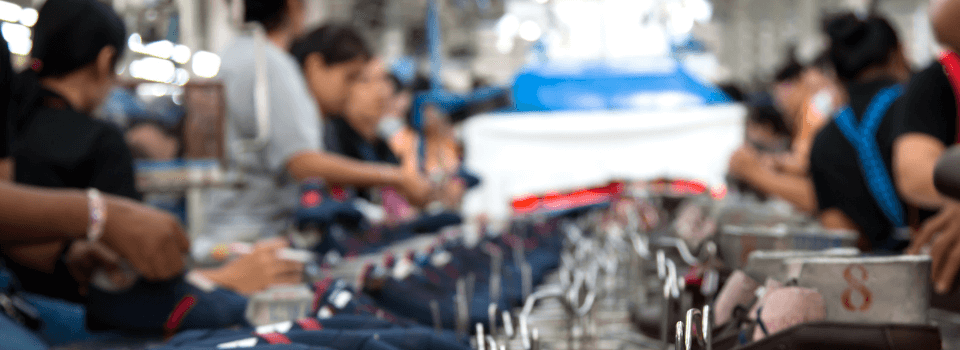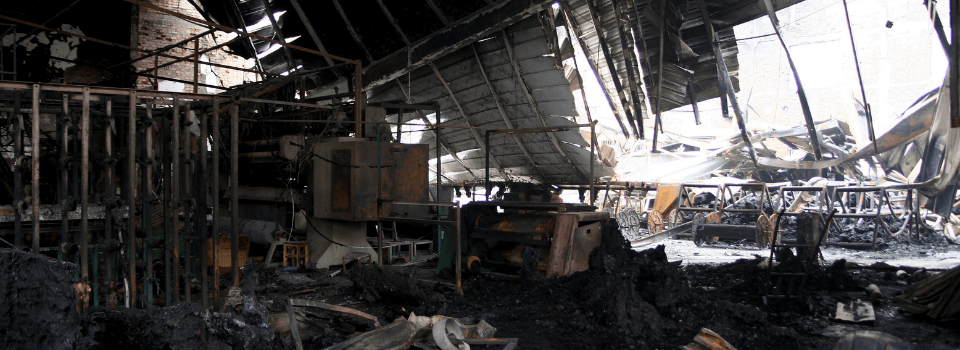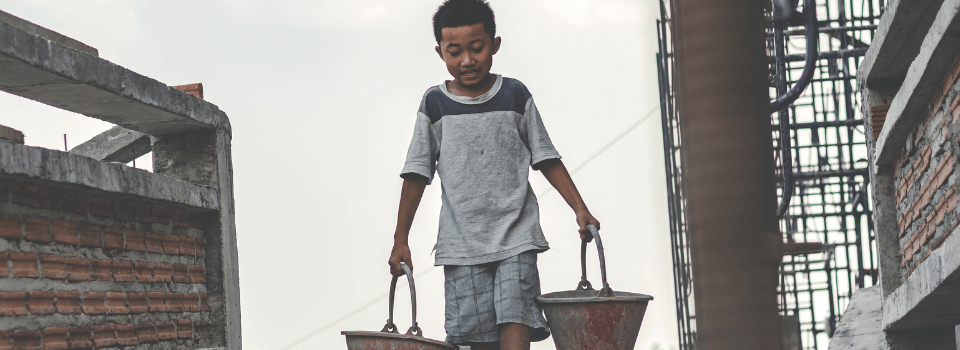Do you know where your clothes are coming from? Are the businesses you buy from transparent when discussing the manufacturing journey of their products? These are important questions that people should be asking.
Let’s Recap On Fast Fashion
Fast fashion is the cycle in which brands are overproducing low quality garments in order to follow trends seen in fashion shows. Consumers are then encouraged to buy these products and discard of those which they had bought when following the earlier trend. Over production leads to over consumption, which is not a sustainable process in which the fashion industry can continue to follow. The fast fashion cycle is causing many problems for not only the environment but in the lives of garment workers.
If you would like more insight into this topic then you can read about it on our blog post ‘The Impact of Fast Fashion On The Environment’.
Fast Fashion: A Danger To Garment Workers

Sweatshop is a term you have likely heard of but what exactly does it mean? According to the Cambridge Dictionary, a sweatshop is ‘a small factory where workers are paid very little and work many hours in bad conditions.’ This is a very simple explanation to what is actually an incredibly complex problem.
The World Counts found that ‘the clothing industry in Bangladesh accounts for about 80% of the country’s exports and around 40% of its industrial workforce.’ This is an example which portrays how vast this problem actually is. With this data in mind, it is estimated that there are over 3.5 million garment workers, with over 80% of these workers being women.
Bangladesh is just one of many countries that have these sweatshop working environments. Millions of people are working long hours in poor conditions and are often paid less than minimum wage. And why? Because the fashion industry promotes over consumption, according to the Wall Street Journal ‘In 2018 the average American bought 68 garments a year.’ Meanwhile the workers creating the garments are paid well below the minimum living wage. Whilst overproduction is a problem that needs to be sorted by brands themselves, it is also down to consumers to be more mindful in who they give their business to and how they dispose of old garments.
Dangerous Working Environments

There are thousands of stories from workers who have discussed the terrible conditions in which they are forced to work. An example that shows truly how much of a danger these environments are, is ‘The Rana Plaza Disaster,’ which involved 5 Bangladesh garment factories collapsing. Killing over 1000 workers and injuring a further 2500, this is one of many tragic accidents that have occurred due to problems being overlooked for the sake of fast fashion.
Unimaginable Working Hours And Unpaid Wages
The Worker Rights Consortium estimates that during the pandemic, garment workers have been denied over half a billion dollars of earned wages. The average worker is doing over 100 hours of work per week and taking home a wage far less than the living standard, often forcing themselves to work overtime in order to be able to pay for necessities like rent and food.
With working excessive hours and lacking the money to nourish themselves it is incredibly common for factory workers to be injured whilst at work. However, workers do not have the opportunity to join worker unions and are often left jobless without financial support.
Taking Advantage Of The Vulnerable In Society

These factories seek out the most vulnerable in society in order to exploit them and force them to work in such inhumane conditions. According to Labour Behind The Label ‘Gender discrimination runs deep throughout all of the countries in which garments are currently produced. Women are often subjected to verbal and physical abuse and sexual harassment.’
As well as this, the industry also employees an incredibly high number of children. Child labour is an incredibly common problem which is often overlooked due to the lack of support workers receive. According to Eco Friendly Habits ‘there are an estimated 250 million kids working in sweatshops worldwide. In developing countries, an estimated 168 million children aged between 5 to 14 years are forced to work in apparel factories.’
Tackling The Fast Fashion Problem: Brand Transparency
Going forward, brand transparency is incredibly important. It is time for businesses to take accountability for their actions. Industry giants are being encouraged to create a more sustainable manufacturing process. Fashion Checker states that ‘transparency in production supply chains is the first step towards improved working conditions but it is not the solution.’
Whilst putting pressure on businesses it is also important for consumers to take action. There are a vast number of resources that will help you understand which retailers are taking on the transparency pledge and working towards creating a more sustainable world. Brand transparency benefits consumers as they are made aware of the manufacturing process, this added insight can help when deciding to buy products from brands.



